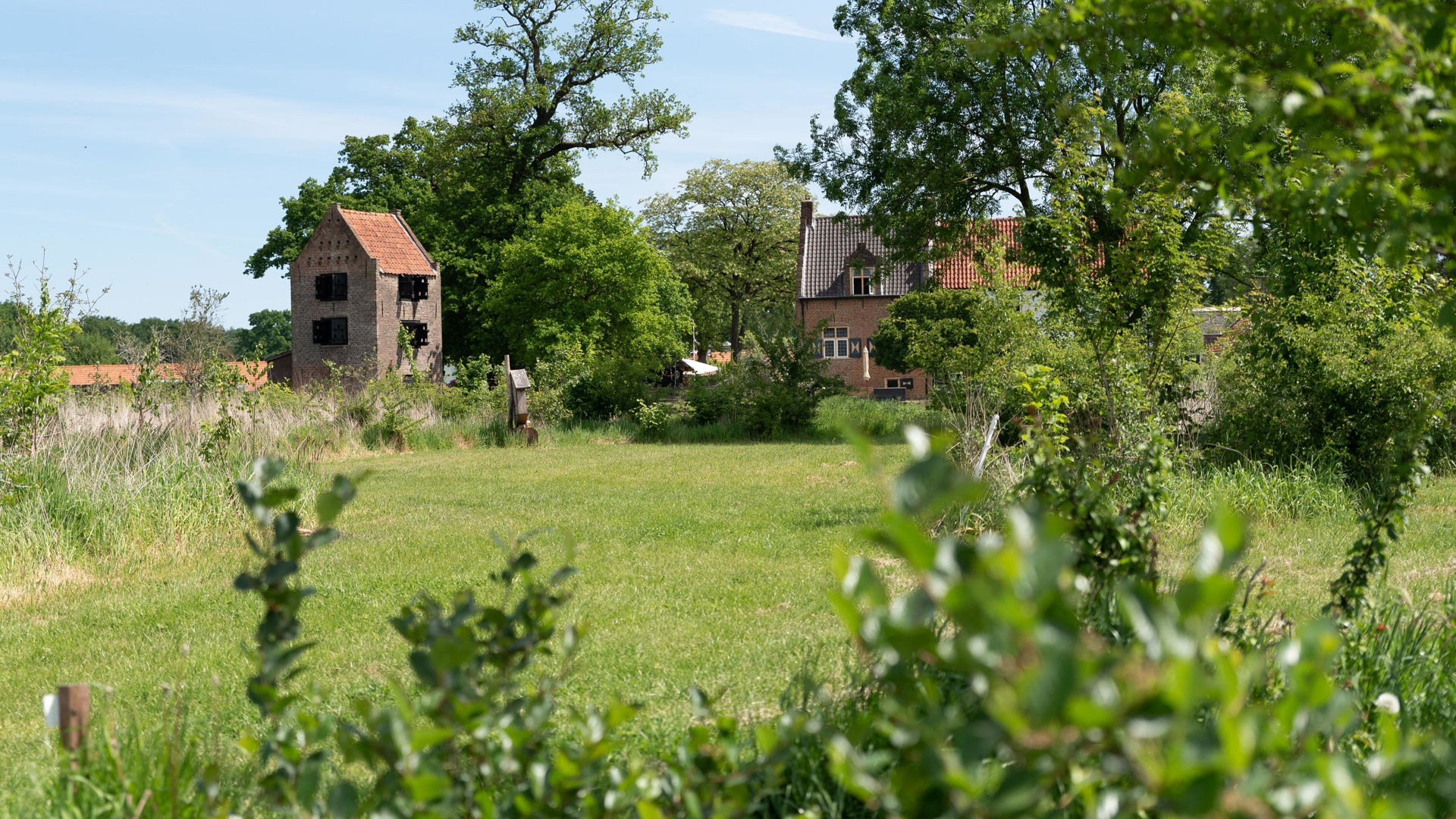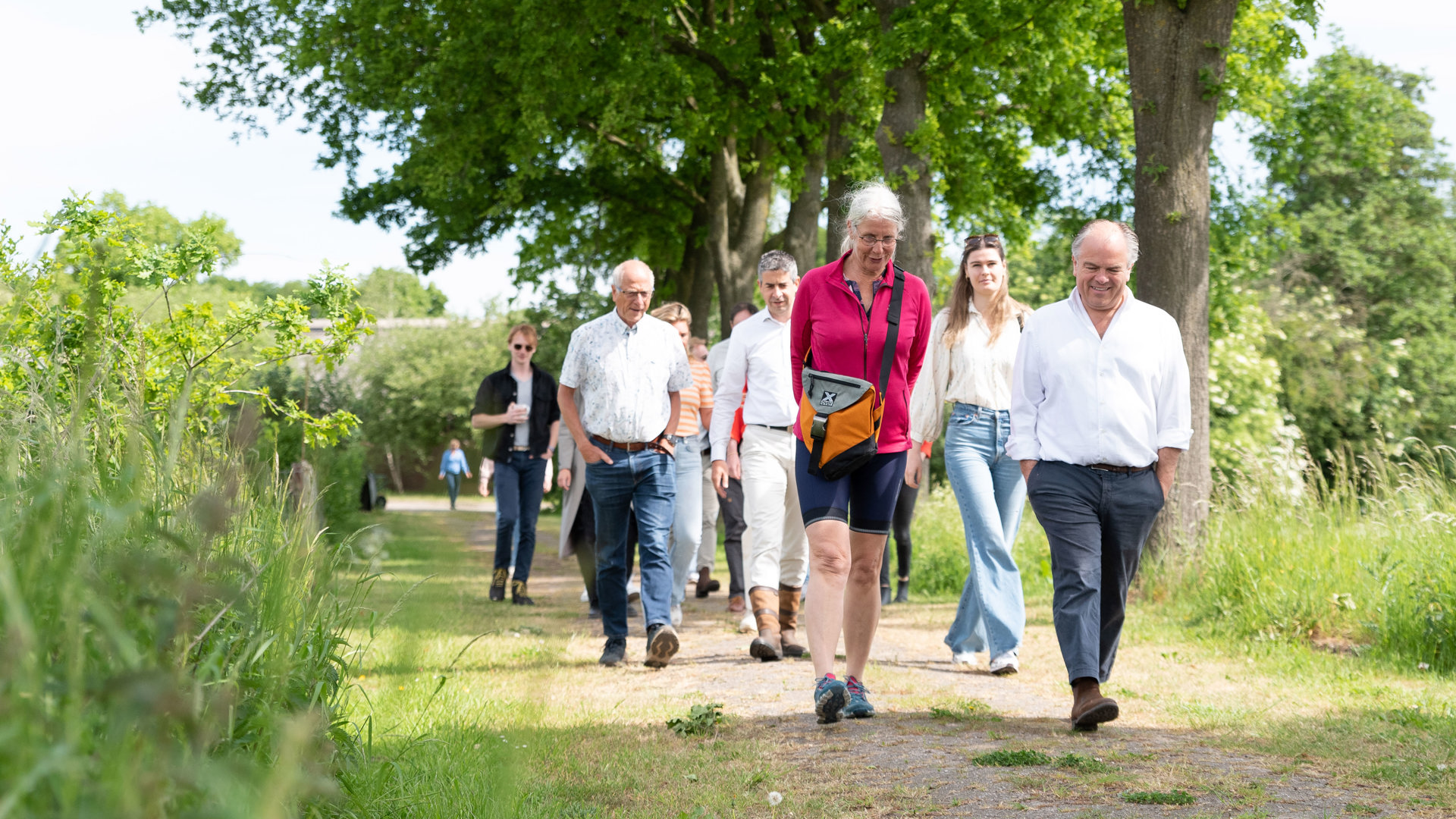
The area around regenerative farm Schevichoven is known for the invention of the 'broiler chicken'. But where food production after the Second World War was about producing as quickly and cheaply as possible, climate change is forcing us to consume more sustainably. And that is what Maarten van Dam, owner of Schevichoven, and his employees are trying to do: regenerative farming with a profit motive.
During a tour of the centuries-old farm, once a flax farm (Schevic = flax), he shows investment and sustainability specialists from insurers the difference between monoculture and (regenerative) polyculture. The insurers present are all active within the IRBC 2.0 projects Biodiversity and Healthy Food of the Dutch Association of Insurers.
"When we came to live here ten years ago, we already knew that we wanted to do 'farming' differently. Farmers can earn a good living by restoring and maintaining soil quality and a good living. We want to be an exemplary farm with this," explains Van Dam, while the group of insurers looks out over the plot of six hectares of planted land. There are no fewer than forty types of perennial crops in different layers. Grape vines, not for wine but to eat as is, are next to the liquorice plant. The raspberries next to the herbs. And from an adjacent row, the first green asparagus are showing their heads. That there is cardoon, you can eat the stems of that medium-sized plant, which taste like artichoke.
Clover grows between the rows of crops. "Actually, I should get money for that from the government," jokes Van Dam. "Because this plant converts nitrogen from the air into white balls between roots." The farm is busy during this period. The rhubarb and asparagus are harvested and in two weeks the honey berries. The herbs from Schevichoven go to tea producer Wilder-Land or the Pink Bunker, among others. Van Dam also supplies its (seasonal) products to Boerschappen and online supermarket Crisp. Every year he makes new price agreements about it that are based on wholesale prices.

The funding for the nature-inclusive farm amounted to a total of 4.7 million euros. 1.5 million euros was raised through crowdfunding. A third comes from so-called informals (private private investors both at 3 percent interest and a 10-year loan), the remaining 1.75 million euros is equity. A minimum turnover of 30,000 euros per hectare should be possible after a seven-year run-up. Ultimately, with a higher yield per hectare than the average regular arable farming achieves.
Van Dam and his team are committed day in and day out to a profitable business model that other farmers can copy. A model that is scalable. "That's why we don't use subsidies, no volunteers, we don't run a farm shop and we are not certified organic. If we then demonstrate that a good living can be earned with this, then that is not an argument for not changing. With our business model, we want to appeal to all farmers." The neighbour, a pig farmer, is convinced. He has since switched to Van Dam's concept. So his 8.5-hectare land is now also being used for regenerative agriculture.
The group passes farmer and manager Ruben Imminkhuizen. He is busy with the land, because the soil requires maintenance, such as weeding. "If you don't, the soil will eventually turn into a (beech) forest," he explains. Imminkhuizen is responsible for regenerative permaculture on the farm. "This means that we do not grow the same crops everywhere, but rather work with different perennial crops: permanent agriculture. This restores the soil and prevents it from being depleted as can happen with annual crops in a monoculture."
He has been working on the farm for four years now and is happy that the different layers and crops have grown considerably. This way they can each fulfil their role in the edge of the forest. "With perennials, herbs, perennial vegetables, berries, fruit and nut trees, you make the soil healthy, you bring back biodiversity and you farm like we used to do."

Regenerative agriculture is a collective term for agricultural methods that work with nature instead of against it. It focuses on restoring forests, improving depleted soil, increasing biodiversity, improving the water cycle and strengthening the health of the landscape. The goal is to return the area to a healthy, original state.
Ruben walks past the honeyberries whose branches bend due to the weight of the few centimetres of blueberries that hang from them. Despite the lack of rain in recent months, everything looks nice and green and juicy. Because the soil retains water much better, precisely because of the various plants. "But also because we installed drip irrigation during the planting, so that we can provide the crops with water. This means that irrigation is actually our insurance premium," he says with a wink. Although Imminkhuizen could not wish for a greater gift than rain on his birthday today.
Would you like to know more about Schevichoven farm and the road to regenerative and financially healthy farming? Then take a look at their website schevichoven.nl. Maarten van Dam is also an impact investor at investment fund Pymwymic. Read more about it in part 1 of our Schevichoven report: IRBC insurers on biodiversity and healthy food.